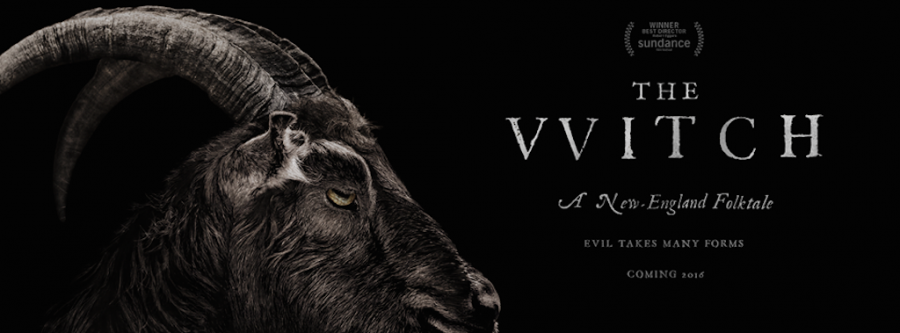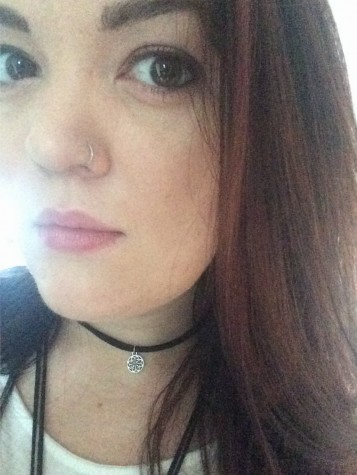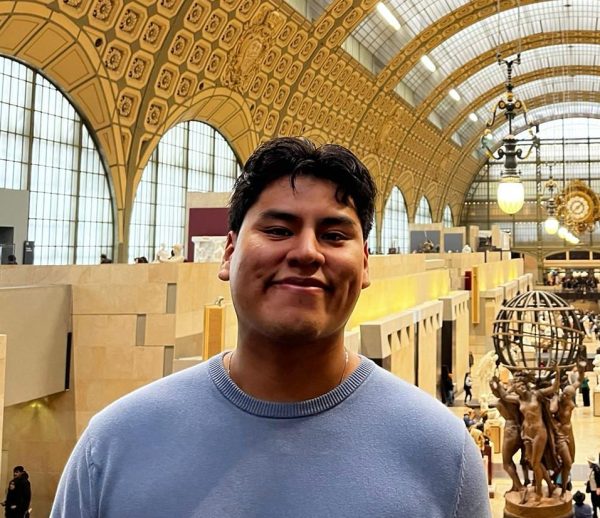The Witch
A Dark and Eerie Horror Needed in Today’s World of Pop-Scares
March 3, 2016
Horror movies have become nothing but contests to see how times something can go BOO! and still cause a person to scream. Many feel as if they are composed of quickly thrown together scripts, crappy and overly complicated storylines, played by a cast that has never be heard of, and have a handful of pop-scares sprinkled within. Pop-scares have become the only way to get an audience scared for sometime now. The Witch was very far from what most horror movies have devolved into. This film brings out the true meaning to horror.
Horror is meant to frighten the viewers. A few moments of terror do get the job done but that is not true to what fear actually feels like. Fear starts out small, a seed way back in the mind that blooms in dark and hopeless environments. It grows and swells in circumstance then climaxes in moments of sheer painful terror. Director and writer, Robert Eggers, was able to bring the viewer to a very familiar place in which fear festers and explodes.
Set in New England in the 1630’s, a colonial family is banished from their town for an unknown reason. Having no where else to go, the family of six moves to a faraway clearing after traveling for sometime through the woods. After over a year later, the story continues showing that the family has established themselves in the very same location and has been fruitful. In the long absence, the family had created not only a house but multiple buildings on the property. They also had obtained two sheep, one white female and one black male named Black Philip, as well as successfully grown a small field of corn. The family was even able to expand by welcoming young baby Samuel into their lives. Things are going well for the family until they take a sudden turn for the worst not unlike most movies of the horror genre.
The escalation of the wicked events at first starts slow but quickly throws the audience into America’s deeply grotesque past. Only a viewer that has been living in a moss covered house, deep in the thick dark woods would miss the clear parallels to that of a time in which New England ran rapid with hushed tones speaking of witch craft and the devil. This connection summons all the information that the viewer has ever learned about the Salem Witch Trials to the surface.
Casting was expertly done continuing the atmosphere for the time period around that of The Witch Trials. Ralph Ineson, plays William, the gruff, bearded, gangly yet oddly muscular father. He is everything expected in a man from the 1630’s. His groveling voice is so natural for a horror film that it’s almost comical that he is not narrating all films of the genre. The mother, Katherine, who is played by Kate Dickie, is more commonly known for her role in Game of Thrones as the crazy Aunt Lysa. Her sharp petite features almost pierce through her tight waxen skin, making her look like a witch from childhood nightmares. Thomasin, the eldest child and protagonist, is played by Anya Taylor-Joy. She perfectly acts the role of the young Puritan teen who is constantly seen as the root of all problems. The eldest son, Caleb, played by, Harvey Scrimshaw works hard at beating his own inner demons while the Twins, Mercy (Ellie Grainger) and Jonas (Lucas Dawson), make dangerous allegations towards Thomasin when they are not terrorizing Black Philip, the black sheep on the farm .
Paranoia quickly sets in among the family when Samuel mysteriously disappears and witches are brought into question. The once quaint forest surrounding the homestead then becomes something to be deeply feared. That very same fear is then brought directly into the home.
For those that have become accustomed to pop scare horror movies The Witch was deeply disappointing. There was not one pop-scare through out the hour and a half film. Instead the film was able to cast a spell onto the audience allowing some to feel the slow crescendo of fear right to the very end. Many did not feel this way. Too many crave the short bursts of adrenaline and fear in one’s system that pop-scares create. Instead The Witch builds anxiety throughout the entirety of the film, only to climax at the very end. It does this by creating an atmosphere that breeds terror.
Throughout ever scene of the film the audience is left with an oppressive feeling of dread and suspicion. The feeling slowly builds up within the stomach, seeping into the surrounding areas until it is throughout the body. It’s cold and malicious. Its no good but one can not be sure how harmful it could truly is. The swells of dread, unease, and hysteria cause audience to become entranced, wanting to look away from the screen but yet are unable to.






